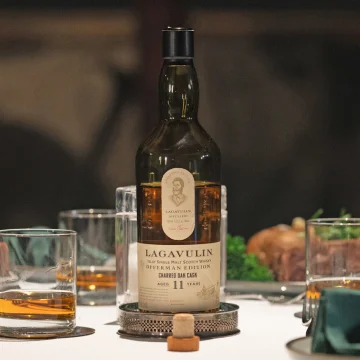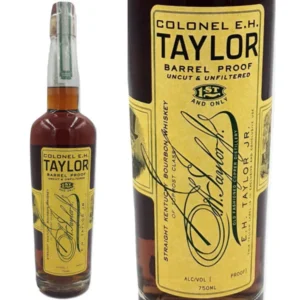COLONEL E.H. TAYLOR SINGLE BARREL
$219.99
STRAIGHT KENTUCKY BOURBON WHISKEY
COLONEL E.H. TAYLOR SINGLE BARREL . is widely considered one of the founding fathers of the bourbon industry, fighting for the Bottled-in-Bond Act of 1897, nearly three decades after he purchased what is now called Buffalo Trace Distillery. During his time, Taylor implemented several innovative methods still used today, including climate controlled aging warehouses. E.H. Taylor, Jr. Single Barrel is aged exclusively in Warehouse C, which was built by Taylor in 1881 and proven to be an excellent aging warehouse. Each barrel is hand-picked and Bottled in Bond at 100 proof to honor its namesake.
The aroma carries lightly toasted oak, with dried figs and butterscotch. One sip brings flavors of sweetness balanced with tobacco and dark spices. The finish is just long enough to prepare the palate for another sip. The bottle itself is a likeness to Colonel Taylor’s original design used over a century ago.
REVIEWS
COLONEL E.H. TAYLOR SINGLE BARREL
“A very sound whiskey that ably demonstrates the small Bottled-in-Bond sector of American whiskey making.” -Paul Pacult’s Spirit Journal
E.H. Taylor, Jr. was a visionary in the whiskey world with a mind for distilling that was years ahead of its time. He founded a world class Distillery, made advancements to the industry, and fought for the purity and legitimacy of bourbon gaining him the title of the “Father of the Modern Bourbon Industry.”
Taylor is celebrated for the countless innovations he contributed to the bourbon industry in his time. His first involvement in the industry came as a banker, aiding in the organization and financing of several distilleries. Through his experience as a banker, Taylor became personally acquainted with several prominent whiskey makers. Taylor’s 1869 purchase of a small Leestown distillery that he christened O.F.C. was his first foray into distilling, making an immediate mark on the industry by modernizing, expanding and upgrading the plant. Among his innovations were copper fermentation tanks, state-of-the-art grain equipment, column stills, modernized buildings, a more efficient sour mash technique and a first-of-its-kind steam heating system still used in the barrel warehouses today.






















